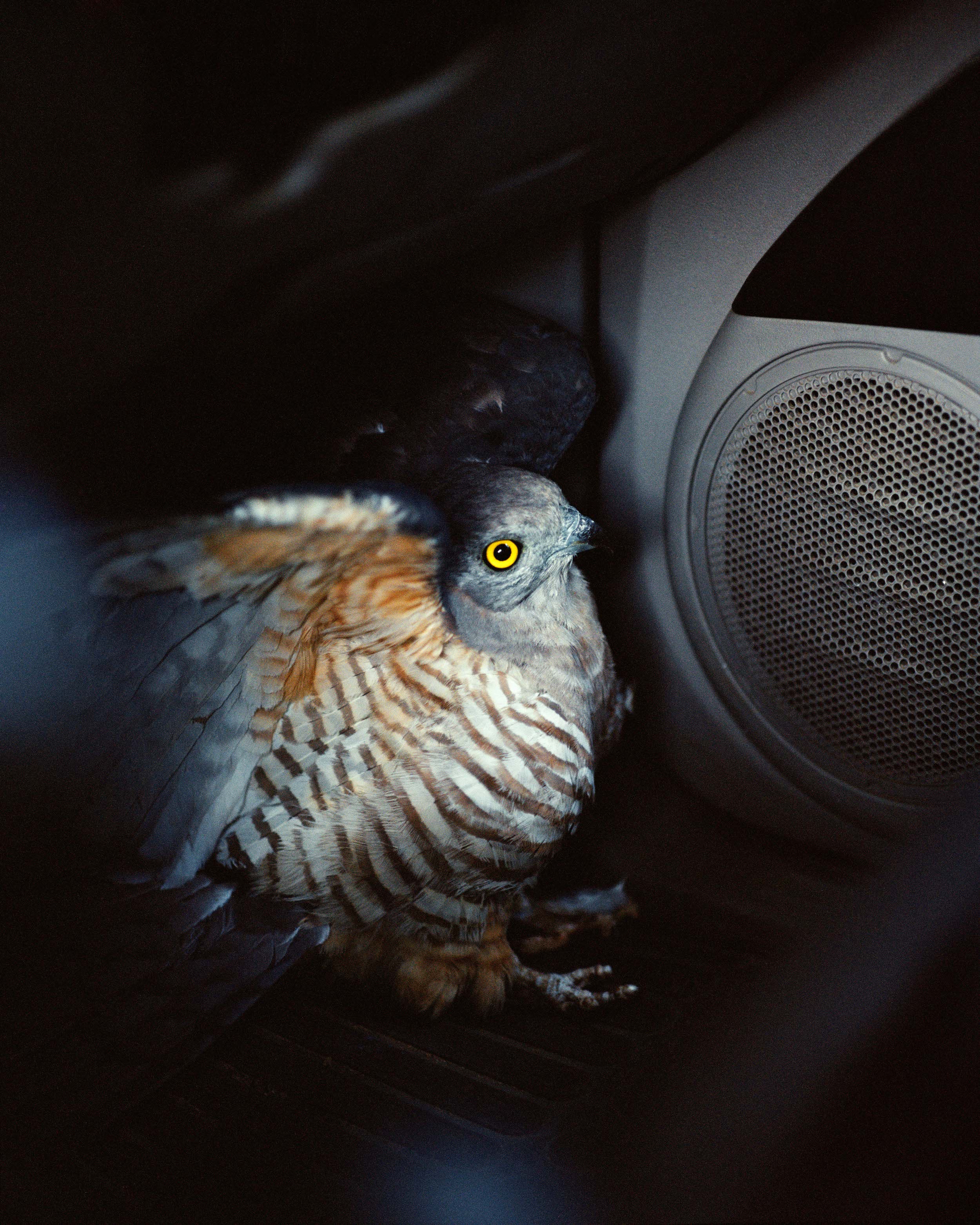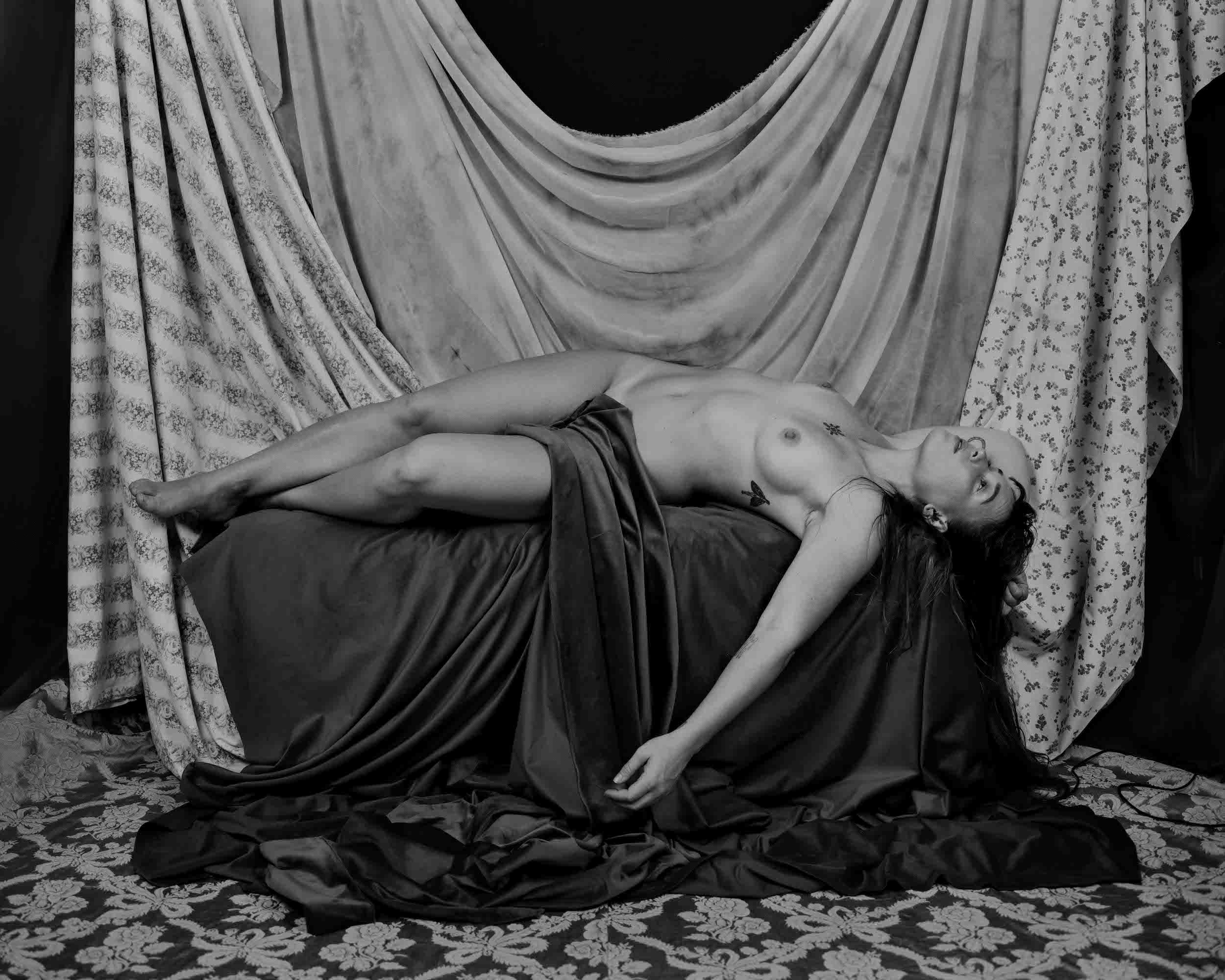New work © Teva Cosic
Born on unceded land in Australia, and growing up in a multi-cultural household, One to Watch Teva Cosic developed a delicate sensitivity to the human and natural factors that make up our environment
Teva Cosic was born in 1994 in Cairns, an area in Eastern Australia that is also known by its traditional name, Gimuy; Cosic now lives between Cairns/Gimuy and Melbourne/Naarm, where she studied photography at RMIT University. On her website she states that: “I would like to acknowledge the Traditional Owners and Custodians of the lands on which I live and work. I pay my respects to the stories, traditions and living cultures of Aboriginal and Torres Strait Islander peoples and acknowledge that sovereignty has never been ceded.”
Like Australia, Cosic’s relationship with nation states and national identity is not simple. Though she was born in Cairns/Gimuy and spent much of her childhood there, she also grew up in Sweden, her mother’s native country, and speaks Swedish; her surname is Croatian, meanwhile, because her paternal parents emigrated to Australia from there. Cosic has drawn on both her Croatian and Swedish heritage in her practice, shooting Puno Puno, Lacu Noć (‘Lots and Lots, Good Night’) after her Croatian grandmother died, and making Wander Lines during a six-week stay in Sweden.

“I’ve been trying to make work about cultural connections, the things we carry with us from different places and how we live culture when we’re not there.”
“I’ve been trying to make work about cultural connections, the things we carry with us from different places and how we live culture when we’re not there,” she explains. “Because we spent time in Sweden when I was younger, and we lived there for a while, there’s always the idea, ‘What would have happened if we had stayed?’ When you’re second or third generation, it’s like you’re connected but you’re also disconnected in other ways. I think photography is the way I try to carry on these connections.”
Cosic says her experience is not unusual in Cairns/Gimuy because, as a popular backpacking town, it attracts many visitors who (like her mother) never leave. She adds that as a child, she gravitated towards people with similar experiences to her own, befriending classmates who had families from Brazil and Switzerland. And though another project, The Birdsong is Deafening, was shot in creek beds near Cairns/Gimuy, it has a similar sensitivity to people and place, to memory and the present time. It shows landscapes in which she played as a youngster, and hones in on plants and animals native to Australia; Cosic’s practice includes playful portraits and self-portraits, but she also has an acute feeling for her environment, including the light and weather.



In both Australia and Sweden you are very aware of the temperature, she explains; in Australia the light is bright and vibrant, in Sweden it is softer because the earth tilts further from the sun. “The colours are very different [in Australia], someone once described it to me as ‘feverish’ and that’s really good,” she says. “The light can be very harsh sometimes, I think in European light it’s easy to take a good picture. But I started to use a flash sometimes [in Australia], like, ‘Go with it, I’m just going to blast it!’”
Cosic graduated in 2021 and stayed in Melbourne/Naarm for a few years; she recently moved back to Cairns/Gimuy for a break and to consider her next step. She was invited to join a Magnum workshop for new graduates, and her work was included in the Head On Photo Festival and PHOTO 2024. Elias Redstone, founder and artistic director of the latter, which is held in Melbourne/ Naarm, recommended her for Ones to Watch. “Teva Cosic exemplifies the exciting new wave of artists and photographers emerging from Australia,” he says. “Working across documentary and portraiture, Teva draws on the traditions and myths of her Swedish/ Croatian heritage as reflected in her own lived experiences to create surreal and compelling images.”
Cosic used to work in a film lab and develops her own colour and black- and-white film; recently she has been experimenting with a 10×8 camera, which she enjoys because it is “so physical, the process is so slow and the camera and negative are so large”. She is using it with X-ray film, which is cheaper than regular 10×8 stock but also more fragile and harder to predict; she embraces its aleatory properties, as she does when photographing friends and family.
“I like to set things up, and then see how it unravels,” she laughs. “When I try and make something together with other people, I like to collaborate, so I’ll have a loose plan but things change. I think it comes from that curiosity and enjoyment of being a kid and having time to play. Now things are more serious, I need to earn money, I need to do the things that adults do. But photography is a good way to come back to this freedom of play and expression.”


